Setting
The film Jeunes lumières (Little Lights) wad directed by more than 300 youths from 10 to 18 years old who, having discovered on the big screen the films of the Lumière brothers and technicians, having soaked up the films’ spirit and talent, headed off to film their own hometowns, Le Havre, Lyon, Paris and Toulouse and surrounding regions. Each one was accompanied by a cinema professional and a teacher. The guidelines were specific: each participant had one minute of Super 8, with color and sound, to film the place and time of his choice. After group discussion and location scouting, each one “took the plunge.” Jeunes lumières shows sixty of these cinematic minutes. The shoots were organized as part of an exceptional operation, Le Cinéma, cent ans de jeunesse (Cinema, One Hundred Years of Youth) launched by an association that includes the Cinémathèque française, the Film Institute of Toulouse, the Lumière Institute in Lyon and the Volcan/Eden in Le Havre.
Credits
JEUNES LUMIERES (France, 1995) • 60 minutes gathered among 350 minutes shot by students of Paris, Lyon, Rouen and Toulouse regions with the help of their teachers and 18 tutelary filmmakers • A film composed by Nathalie Bourgeois • Edit: Valérie Loiseleux • Production: Le Cinéma, cent ans de jeunesse and Agat Films et Cie.
Tutelary filmmakers:
Béatrice de Pastre, Emmanuelle Devos, Marc Carpentier, Serge Michel (Cinémathèque Robert Lynen), Tomasz Cichawa, Thierry Nouel, Sylvie Pliskin, Pierre Tredez (Céméa) • Sarah Blachier, Nathalie Lanier, Vincent Tabaillon • Annick Bouleau, Jean-Marie Chatelier, Claude Duty, Jean Gaumy, Jean-Christophe Leforestier, Gérard Louis-Clément • Sarah Moore.
Cultural partners and schools:
PARIS : Cinémathèque française - Ecole élémentaire rue Doudeauville (18ème), Ecole élémentaire rue de Tourtille (20ème), Collège Louise Michel (10ème), Collège Georges Braque (13ème), Lycée Victor Duruy (7ème) • TOULOUSE : Cinémathèque de Toulouse - Ecole élémentaire de Fauch, Collège de Marciac, Lycée d’enseignement général et technique agricole Jean Monnet de Vic en Bigorre, Lycée professionnel Jean Vigo de Millau • LYON : Institut Lumière - Ecole élémentaire des Gémeaux (Lyon 5ème), Collège Alain de St Fons, Lycée d’enseignement général et agricole de St Genis-Laval • LE HAVRE : L’Eden, le Volcan - Ecole élémentaire Maréchal Joffre, Collège Théophile Gautier, Lycée François 1er (Le Havre), Lycée Jean Prevost de Montivilliers, Lycée Corneille de Rouen, Lycée Canada d’Evreux.
|
|
Excerpts from Jeunes lumières © Le Cinéma, cent ans de jeunesse and Agat Films et Cie.
|
|
|
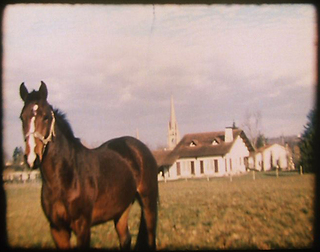
|
|
Jeunes lumières (Little Lights)
« The cinema regains its youth when it re-enacts the founding gesture, the gesture of its origins. When someone takes his camera and faces real life through a fixed frame for one full minute, all his attention focused on what is to happen, holding his breath before the sacred and irremediable fact that a piece of chemical film stock is turning in the camera, capturing the fragility of the moment, overwhelmingly convinced that he will never, ever have another moment like this one in all of time, the cinema is reborn for him, just like the first day a camera was used. When we are deep within what is native to the cinematographic act, we are always like the very first filmmaker, whether we are Louis Lumière or the young boys and girls of today. Those who made this film have discovered what is perhaps most central to cinema : that filming a shot is to be in the heart of the cinematographic act, that all the power of cinema lies in the raw act of capturing a minute of the world, and especially, the conviction, upon discovering, several days after the film has been developed, that the world is a surprising place, never quite how we expect it to ben that it is always more imaginative than the filmmaker and that films are always stronger than those who make them. »
Alain Bergala, 1995
|
|
Not innocent, just sincere...
When we found out that we had to choose a moment of reality, we all became Ecclesiastes, we were kings, and said to ourselves “Everything is in a constant state of flux that no one individual is able to understand and account for. The eye can never see enough, nor the ear hear enough1”.
But we quickly became subjects, or rather citizens – and thus was the monarchy dissolved a second time by the coalition of three:
liberté égalité fraternité (Freedom, Equality and Brotherhood).
We had the choice following the same conditions and we were all in it together.
I wanted to shoot in a market place to see / show all the faces passing by. But this was subverted by the choice of the marketplace. It seems that my choice of the Belleville Market came from the old populist tradition, inherited from the generation who lived through May ’68. This is not a political legacy as our parents thought, but only a humanitarian one.
The miracle is the camera’s powers of transformation. “Your camera doesn’t shoot things as you see them (it doesn’t take what you want it to mean)2”.
The camera transforms the humanitarian into humanism, the conscience satisfied by that which is done. It’s the camera that is political, instead of the political being artificially grafted into established images. It’s the Orange seller with his winning smile who is the star of the show, and the maintenance workers who make science fiction out of real life.
Our shots take on life (Life is ours).
We’re confident in ourselves and our age.
Because others had confidence in us, they passed it on to us. For some it was born from a “presumption of innocence.” They see innocence in us and therefore in our cinema, that is to say stimulus and response at the same time. Innocence, though, is not an intrinsic quality of youth (to say this is to note the flipside of this is that children are cruel) innocence is inherent in being - not in age. Do you believe that a 6 or 7 year old doesn’t predict a result, a final image, before pressing the shutter release?
Do you think that children don’t seek any sense of meaning in their shot, that they have no intention behind, or prediction about the shot’s meaning? There is innocence – when we shoot – but not in gesture, because these are premediated, but innocence is in the moment as it is vital and spontaneous. The only innocence is perhaps in our hearts, whose beats drown out the sound of the real world.
But we’re not innocent, just sincere. When we place a camera on the street, we are no longer masters of all we survey, we cannot “reign innocently” as Saint – Just proclaimed. We step into the world of the real with our camera, but we are immediately overcome and absorbed into a new order by this new element – me and my Super 8.
It is already and again EVERYTHING.
We are children of the world, not in the world of childhood.
Lili Hinstin, final year student, lycée Georges Duruy, Paris, 1995
1 Ohéléth, l’Ecclésiaste, I, 8.
2 Robert Bresson, Notes sur le cinématographe, p. 111
|
|
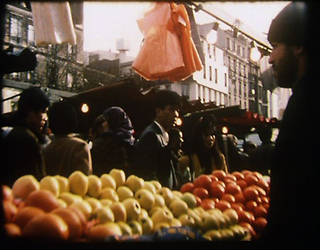
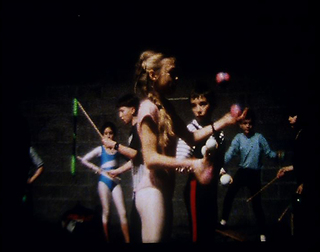
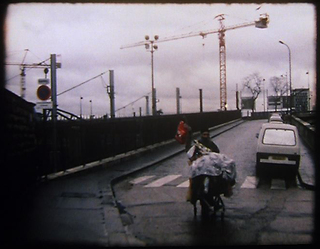
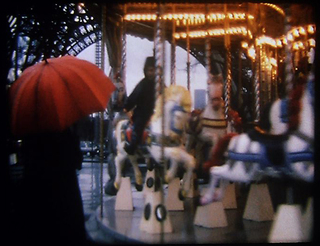
|
|
|
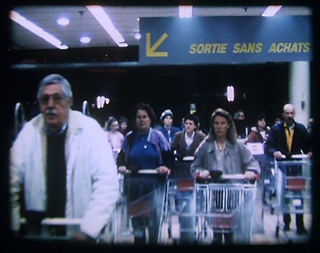
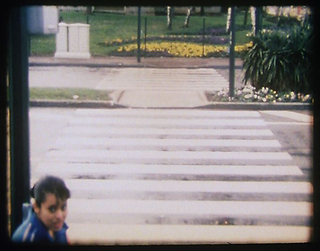
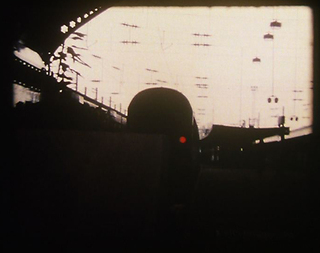
|
|
Which “Lumière” shines its light on Lyon?
In 1895 Louis Lumiere and his cameramen decided to film, first and foremost, their town. An end of century Lyon opened up for the world of the future. In 1995, a group of Young Lumières, children of an 100 year old artform, took control of a new camera. They filmed with Super 8, a format which at that time was in the process of disappearing. They took to the town to film, the same town as a hundred years previous, but yet different at the same time.
The attention paid to the buildings is the same, even if the locations have changed. The buildings of the peninsula, the posh parts of town, shopping streets, have been succeeded by bars, thrown up in the 70’s, encircling the town. Bigger than before, the Lyon of 1995, extends its influence beyond its centre. The choice of filming the Place des Cordeliers with the cinematograph corresponds to the cities of Vaulx-en-Velin, Vénissieux or La Duchère, in a remarkable shortcut which testifies to evolution over a century.
Instead of the trams and busses empirically chosen by Lumière, today’s filmmakers choose the driverless metro system. In Place Bellecour / Gare de Vénissieux over the course of a minute, distances stretch out, the swarming of the crowds evokes a deaf impatience, just on the edge of exploding. Lyon, the city of the Lumières has become the city of light. The black, marshy city, lights its fires and accepts its mixtures. The young filmmakers etch the city on to film, for the collective memory of images, and that of the city itself. In each film we see the same desire – to get to know your area, your places, your neighbours and friends. The Lumière tradition continues. Line D of the driverless Metro system, form the market square at Saint-Fons, a group of Lyonnaise play boules in the snow. On the ring road, they capture the emotions and colours of life with their little cameras. The Lumière tradition lives forever.
Like a crossover secretly shared between the inventors and his inheritors. We see ‘leaving the school gates’ where students, boys and girls, take the place of the workers of the factory at Montplaisir. At the entrance to a supermarket, the Mammouth at Sanit-Genis Laval, everyday life carries on, opening hours and chaos, the mechanical rhythm of the lifting of the metal grill, the pushing of the trolleys…
A street scene which captures two overexcited children dancing to music, pulsing at maximum volume from a Ghetto Blaster, while cars avoid the pedestrian areas.
Finally, in place of the shores of the Saône of 1897, with its bathers and horses, here we have the public baths at Vénissieux, all blue and green, with the cries of children who run, jump and dive, and thump each other, all of a relaxing Wednesday afternoon…
60 minutes of adolescent and mature observations, that we can come back to at any time in the future to get a glimpse of Lyon in 1995…
Thierry Frémaux, Artistic Director of the Institut Lumière, Lyon, partner, 1995
|
|
The minute
First of all – the public space: A minute is short, but it’s also long. It’s short – it’s not a film. It’s long like a shot from a video game. We have to work with a chronometer, as if in the clockwork era. A minute of silence, eyes closed or transfixed as you run the knife’s edge, taking us back to our own heartbeat.
The minute is the same for all of us, but, crucially, each person experiences it differently. The tension between time and duration allows children to quit the world of the literal and enter into the abstract. Another tension, that between the camera and reality allows us to achieve full consciousness.
Mathieu had everything prepared. He was ready to film the metro line as it passes over head at the Pont de la Chapelle, filmed from below on the Rue Max Dormoy. It’s his Lumière minute. He checked everything was in order and prepared to film one Saturday afternoon.
On the morning of the filming he confidently set himself up, getting the framing of the shot just right, as rehearsed. He knew when to press record, just as the train came into the station, so that its departure, the journey across the bridge and its disappearance into the tunnel would be achieved in under a minute.
He set the camera and the stop watch off simultaneously… But the train was hanging around at the station… There were more passengers than expected, and a small mechanical problem… Everything was working, except the metro. It was if time had slipped. The passengers wouldn’t notice a thing, but for Mathieu, his internal chronometer races in a state of panic. Mathieu has lost the one constant – the metro’s clockwork reliability. Breaking the rule to keep silent, the little boy can’t stand that reality doesn’t follow the tight scheduling he’d set out for it. His utterance, a symptom of helplessness, sends us back to Mathieu’s state of anguish for ever. But, the metro leaves the station, it crosses the bridge and heads away from Mathieu. All of this happening in the minute set out by the stopwatch.
Béatrice de Pastre, Cinémathèque Robert Lynen in Paris, partner, 1995
|
|
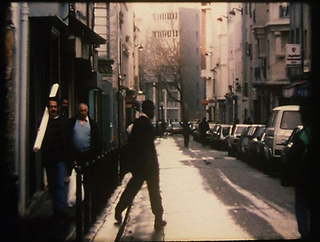
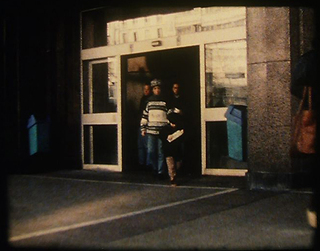
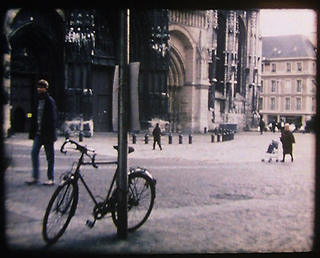
|
|
|
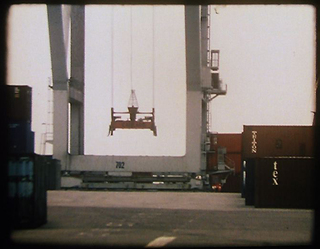
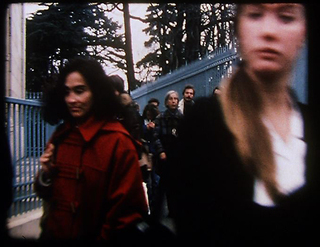
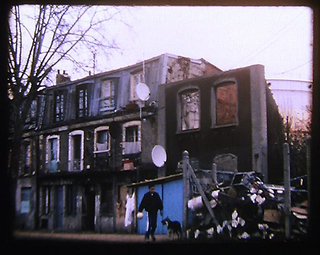
|
|
The element of surprise in a shot, or the role of risk
The principal tension comes from the fact that we’re asking the participants to record such a personal moment, at times a very intimate moment. It can be the first time for the participants that they see a minute from their own experience played large upon the screen in front of them. Like a paper thin manuscript, where the truth of the shot is superimposed over the desire for the image. Will they recognize their own minutes? They expect to see the impression of the moment they filmed, but also what they thought of during the preparation for the minute’s filming. As if cinema, by the process of research, and its slow physical and chemical creation would reveal some secret. The silent shot. This silence demands that the young filmmaker doesn’t mess around like the others. The peak of silence becomes for a minute an act of extreme concentration. And it is in this way that most small films are made. We hear and see as if deaf and dumb in their films, much like with the original Lumière films.
The suspense of the shot. These young filmmakers have discovered, as if by sudden, another relationship with time. Everything seems ready to make cinema, and when that motor turns, that’s us at the point of no return. The rule has to be respected – one minute of uninterrupted filming, from a static point of view. Will the spectators leave the cinema in time? Perhaps a car will take up the majority of the space in the frame and the project will be something else. And the children in the playground, will they stay far away from the camera, or will they swarm in close like bees? Then there’s the tree that just won’t fall. Delphine wants to film at the local leisure centre “I want to get the waves”. You have to wait a few moments before the illusion is complete.
The element of surprise in a shot. Without doubt it’s going to be in there, as the young filmmakers discover the role that chance plays in cinema. That which they hadn’t imagined a few seconds before starting the camera is drawn into existence by cinema. A few shakes from the cameraperson’s hand. Reality becomes illusion – a marriage at the town hall, an exotic swimming pool at centre parks. The attempt to go out and find things to film, once again in forbidden locations – a restaurant in the centre of town. We will have even gone back to the dawn of cinema, with the arrival of a train at a station. There are still, after La Ciotat, some iconic shots to bring to life. We, the observers of the Lumière minutes can think that cinema, too, has a Bachelardian quality where space and movement intermingle. Something of a poetics of space. In any case, a cellar and an attic, where images between the skylight and window, open out on to the world through which the young people peer out. Perhaps they’ve experienced their first real memory of cinema on both sides.
François Bureau, cultural partner, Théâtre d’Evreux-Scène Nationale, 1995
|
|
Interview with Manoel de Oliveira
Manoel de Oliveira revisits the film Jeunes Lumières which first cast its spell on him at the Festival of Cannes in 1995:
MO - One shot that comes to mind is that of a door which opens and closes, returning always to the same point, where it reflected the same image (Bred). It’s a joyously naïve choice, yet one that is also very rich. This film was made with the knowledge of what cinema is, unlike the Lumiere ones, who were discovering it as they went along. We know what cinema is as we’ve 100 years of film-watching behind us. With that in mind, it’s great to return to a naïve position. In another more malicious moment we see Rodin’s statue, nude and from behind. People are surprised by it, yet it’s something very natural that we all know rather well… Then there’s the supermarket with its empty trolleys that we usually see all filled up. Even thought they’re going in, they give the impression of leaving the shop empty, which is rather interesting.
- One viewer thought that the film was sad, in that the majority of students had chosen to film sad subjects.
- No! It’s not sad! We put sadness or joy onto what is shown to us, depending on our own bias! It’s the world looking at children... It’s surprising because these things are very well filmed, which really struck me. This is heading towards a cinema of greater purity than Godard or Straub! Where those filmmakers through a rational approach, the children make their films based on natural intuition, their instinct.
- But we can’t say that they’ve missed out on that...
- No, it’s a way of seeing.
- The viewers have identified that certain shots remind them of specific filmmakers.
- That’s a fatal error. It’s because the film was filmed here on earth – and we’re not on the moon – we’re on the earth (laughs)! That, that is life. It started with the Lumières and it’s carried on with all directors since. Even me, myself, when I made my first fiction film Aniki Bobo, I saw old American films straight away afterwards, and I discovered that all I’d been striving to make came from there, from those films. I left the cinema with a terrible sense of guilt… But it was I who had made the film, nobody else! The cinema reflects life and we know life and cinema.
- Often when the students see their Lumière Minutes projects screened in Super 8 they think that what they’re seeing is rubbish, or say “I didn’t film that!”
- Then one of them will say that they filmed their minute, the one with the car in the middle of the shot that they hoped would move, but which didn’t. Then they say “When I saw the film I found that the car not moving made it more interesting than if it had moved.”
- Yes. We wait for it to go, but it doesn’t… Then there’s a shot of a door and we wait for someone to come out of the door, but they don’t. We wait for a long time for something to happen, but it doesn’t. It’s good. There is something behind the door, something we don’t see, but we can feel that there’s something there…
I liked this film a lot, it wasn’t what I had expected. It’s a film that was made by children, but it’s not for children. Yet it’s very informative, there’s lots of psychology and even para-psychology. Why? Children will instinctively head to that which exceeds them. Spinoza, a Portugese – Jewish philosopher said: There are forces which we ignore, which guide all of our impulses and yet we believe ourselves to be free! It’s parapsychology! (laughs)
Extracts from an interview at the Joinville studios in April 1996, by Nathalie Bourgeois and Valérie Loiseleux.
|
|
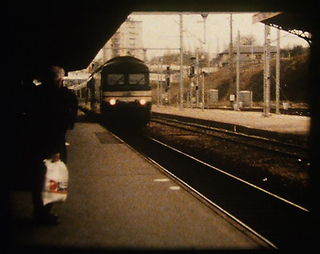
|
|
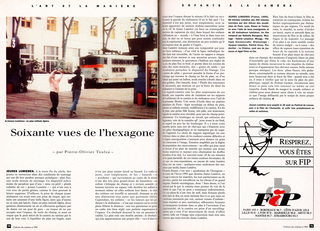 |
|
Sixty views from France
« Jeunes lumières (Little Lights) sets up a temporality that plays across two levels – on one hand the melodic line of the film as a whole, on the other a relation between each shot bringing heightened levels of attention and tension. After a few minutes of watching the films, the spectator gets used to the precise rules of this very short and specific game, and watch out for the mini-miracles happening in the depth of the frame, these “grains of sand” that could come to shake the whole approach… »
Pierre-Olivier Toulza, Cahiers du cinéma n° 494, septembre 1995
|